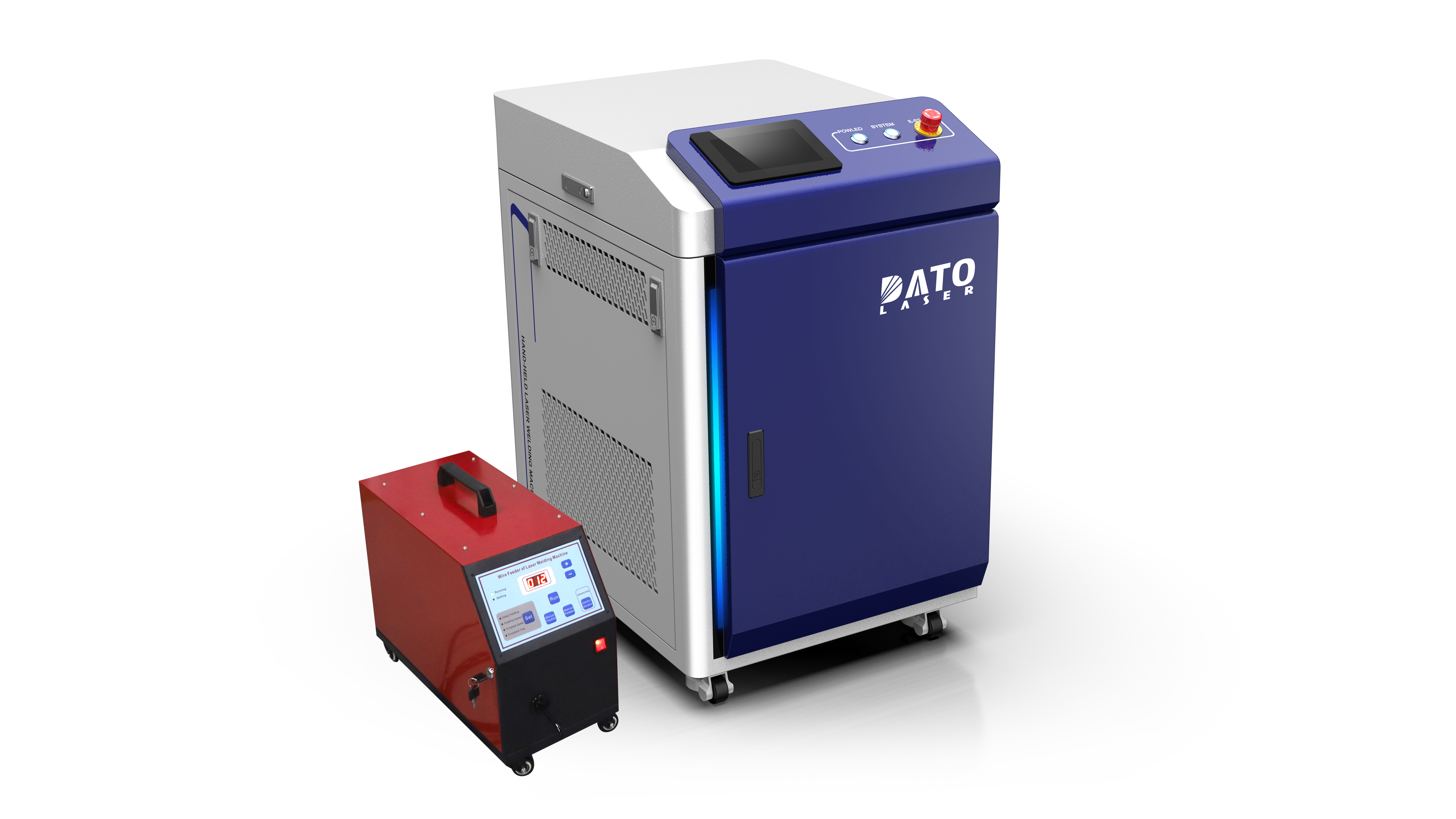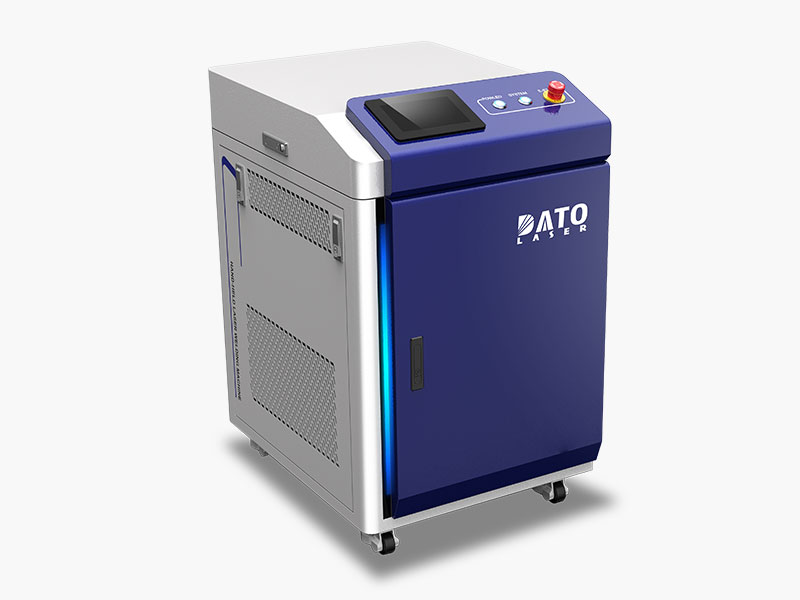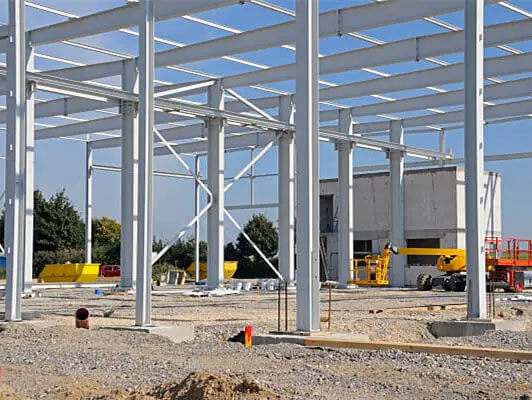Laser Welding Titanium and its Alloys: Key Parameters for Success

Laser Welding Titanium and its Alloys: Achieving High-Quality Welds Through Precise Parameter Control
Titanium and its alloys are renowned for their exceptional strength-to-weight ratio, corrosion resistance, and biocompatibility, making them indispensable in aerospace, medical, and chemical processing industries. However, welding these materials can be challenging due to their high reactivity and sensitivity to heat. Laser welding offers a precise and efficient solution for joining titanium and its alloys, but achieving high-quality welds requires careful control of specific laser parameters. This comprehensive guide will delve into the crucial laser parameters needed for successful titanium welding, providing valuable insights for manufacturers and engineers. At Dato and Leapion, we understand the intricacies of laser welding and are committed to providing advanced laser welding solutions that meet the demanding requirements of titanium fabrication.
The Challenges of Welding Titanium and its Alloys
Titanium and its alloys present unique challenges in welding due to their inherent properties:
High Reactivity: Titanium is highly reactive with oxygen, nitrogen, and hydrogen at elevated temperatures, leading to embrittlement and reduced weld quality if not properly shielded.
High Melting Point: Titanium has a high melting point, requiring sufficient laser power to achieve proper fusion.
Low Thermal Conductivity: Titanium's low thermal conductivity can lead to localized heating and potential distortion if not carefully managed.
Sensitivity to Heat Input: Excessive heat input can result in grain growth, reduced mechanical properties, and the formation of brittle intermetallic compounds.
Porosity Formation: Improper welding parameters can lead to porosity formation, weakening the weld and reducing its structural integrity.
Laser welding offers a precise and controlled heat source that can mitigate these challenges, but successful titanium welding requires a thorough understanding and careful control of key laser parameters.

Key Laser Parameters for Welding Titanium and its Alloys
The following laser parameters are crucial for achieving high-quality welds in titanium and its alloys:
1. Laser Wavelength
The wavelength of the laser beam plays a significant role in the absorption characteristics of the material. For titanium and its alloys, fiber lasers with a wavelength of around 1070 nm are commonly used. This wavelength is well-absorbed by titanium, resulting in efficient energy transfer and effective welding. Other laser types, such as CO2 lasers, are less suitable due to their longer wavelengths and lower absorption rates in titanium.
2. Laser Power
Laser power is the amount of energy delivered by the laser beam per unit time. The appropriate laser power depends on the material thickness, welding speed, and desired weld depth. Insufficient laser power will result in poor fusion, while excessive power can lead to excessive heat input, distortion, and potential damage to the material. For titanium welding, precise control of laser power is essential to achieve optimal weld quality. Typically, higher laser power is required for thicker materials and deeper welds.
3. Laser Spot Size
The laser spot size refers to the diameter of the laser beam at the focal point. The spot size affects the energy density and the heat-affected zone (HAZ). A smaller spot size results in higher energy density and a narrower HAZ, which is beneficial for precise welding and minimizing distortion. However, a smaller spot size may require higher laser power to achieve sufficient penetration. The optimal spot size depends on the specific application and material thickness. For titanium welding, a spot size that allows for sufficient penetration without excessive heat input is crucial.
4. Welding Speed
Welding speed is the rate at which the laser beam moves along the weld joint. The welding speed must be carefully controlled to ensure proper fusion and prevent defects. Too slow a welding speed can lead to excessive heat input, grain growth, and distortion, while too fast a welding speed can result in incomplete fusion and lack of penetration. The optimal welding speed depends on the laser power, spot size, and material thickness. For titanium welding, a balance between welding speed and heat input is essential.
5. Pulse Mode and Frequency
For certain applications, pulsed laser welding may be preferred over continuous wave (CW) laser welding. Pulsed laser welding involves delivering the laser energy in short bursts, allowing for better control of heat input and reducing the risk of distortion. The pulse frequency, which is the number of pulses per second, also influences the welding process. Lower pulse frequencies can result in higher peak power and deeper penetration, while higher pulse frequencies can provide better control of heat input. The choice between pulsed and CW laser welding depends on the specific application and material requirements.
6. Shielding Gas
Shielding gas is crucial for preventing oxidation and contamination of the weld zone. Titanium is highly reactive with oxygen, nitrogen, and hydrogen at elevated temperatures, so proper shielding is essential to maintain weld quality. Argon is the most commonly used shielding gas for titanium welding due to its inert nature and ability to displace atmospheric gases. The shielding gas should be applied to both the top and bottom surfaces of the weld zone to ensure complete protection. The flow rate of the shielding gas must also be carefully controlled to provide adequate protection without causing turbulence.
7. Focus Position
The focus position refers to the distance between the laser focusing lens and the workpiece surface. The focus position affects the laser spot size and energy density at the weld joint. The optimal focus position depends on the laser parameters and the material thickness. The focus position is typically adjusted to achieve the desired weld penetration and minimize the heat-affected zone. Precise control of the focus position is essential for achieving consistent and high-quality welds.
8. Beam Shaping
Beam shaping techniques can be used to modify the laser beam profile to optimize the welding process. For example, a top-hat beam profile can provide more uniform energy distribution, reducing the risk of localized overheating and improving weld quality. Beam shaping can be particularly beneficial for welding complex geometries or materials with varying thicknesses.
Optimizing Laser Parameters for Specific Titanium Alloys
The specific laser parameters required for welding titanium and its alloys can vary depending on the alloy composition and application requirements. For example:
Commercially Pure Titanium (CP-Ti): CP-Ti is relatively easy to weld compared to titanium alloys. Lower laser power and welding speeds may be sufficient for welding thin sections of CP-Ti.
Titanium Alloy Ti-6Al-4V: Ti-6Al-4V is a widely used titanium alloy known for its high strength and corrosion resistance. Welding this alloy requires careful control of laser power, welding speed, and shielding gas to prevent defects and maintain mechanical properties.
Other Titanium Alloys: Other titanium alloys, such as Ti-6Al-2Sn-4Zr-2Mo and Ti-10V-2Fe-3Al, may require specific laser parameters to achieve optimal weld quality.
It is essential to conduct thorough testing and experimentation to determine the optimal laser parameters for each specific titanium alloy and application.
Dato and Leapion's Expertise in Laser Welding Titanium
At Dato and Leapion, we have extensive experience in laser welding various materials, including titanium and its alloys. Our advanced laser welding machines are equipped with precise control systems that allow for accurate adjustment of all critical laser parameters. We offer a range of laser welding solutions, including fiber laser welding machines, robotic laser welding systems, and customized laser welding solutions, tailored to meet the specific needs of our customers. Our team of experienced engineers and technicians can provide expert guidance and support to help you optimize your laser welding processes and achieve high-quality results.

Conclusion: Precise Parameter Control is Key to Successful Titanium Welding
Laser welding titanium and its alloys requires a thorough understanding and careful control of specific laser parameters. Laser wavelength, power, spot size, welding speed, pulse mode, shielding gas, focus position, and beam shaping all play crucial roles in achieving high-quality welds. By optimizing these parameters, manufacturers can ensure consistent weld quality, minimize defects, and maximize the performance of titanium components. Dato and Leapion are committed to providing advanced laser welding solutions and expertise to help you succeed in your titanium welding applications. Contact us today to learn more about our laser welding machines and how we can assist you with your specific needs.
Related Blogs
-
 Exploring the Safety, Precision, and Industrial Benefits of Laser Surface CleaningIn today’s fast-paced industrial world, where quality, efficiency, and sustainability are top priorities, manufacturers are constantly seeking better ways to clean metal surfaces without compromising material integrityBlog
Exploring the Safety, Precision, and Industrial Benefits of Laser Surface CleaningIn today’s fast-paced industrial world, where quality, efficiency, and sustainability are top priorities, manufacturers are constantly seeking better ways to clean metal surfaces without compromising material integrityBlog -
 A Complete Guide by DATO and LeapionIn modern industry, surface preparation and maintenance play a crucial role in achieving high-quality manufacturing results. Laser cleaning machines have emerged as one of the most innovative, efficient, and environmentally friendly tools for removing contaminantsBlog
A Complete Guide by DATO and LeapionIn modern industry, surface preparation and maintenance play a crucial role in achieving high-quality manufacturing results. Laser cleaning machines have emerged as one of the most innovative, efficient, and environmentally friendly tools for removing contaminantsBlog -
 Laser cleaning machines are revolutionizing industrial surface cleaning by offering a faster, safer, and more eco-friendly alternative to traditional methods. Whether removing rust, paint, oil, oxide, or other surface contaminants, laser cleaning has become a cutting-edge solution in manufacturing,Blog
Laser cleaning machines are revolutionizing industrial surface cleaning by offering a faster, safer, and more eco-friendly alternative to traditional methods. Whether removing rust, paint, oil, oxide, or other surface contaminants, laser cleaning has become a cutting-edge solution in manufacturing,Blog -
 Introduction: Transforming EV Battery Manufacturing Through Laser TechnologyThe electric vehicle revolution has accelerated dramatically over the past decade, bringing with it unprecedented challenges and opportunities in battery manufacturing. As global automakers commit billions to electrificationBlog
Introduction: Transforming EV Battery Manufacturing Through Laser TechnologyThe electric vehicle revolution has accelerated dramatically over the past decade, bringing with it unprecedented challenges and opportunities in battery manufacturing. As global automakers commit billions to electrificationBlog












